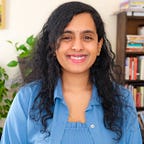I always thought I treasured what I understood to be my culture more than anything. It is why I always assumed I would marry someone who shares the same language. After much awareness and exposure to the lines of separation drawn by identity, these thoughts became less rigid.
Over time, I realised what really mattered was that which so many lives have been sacrificed for. Freedom. The struggle of our ancestors, made up of so much laughter and music, was for freedom. Because freedom is love. It is the only language worth preserving.
Marriage has long been used as a mechanism to reinforce the divides such as caste, race, class or gender that are placed to maintain cruel power hierarchies. Love has become collateral damage of those who want to hold on to false ideas of power. Our attachment to maintaining our identity here has only furthered separation and oppression.
To accept that culture and other forms of identity undermine rather than enhance our humanity is an uncomfortable thought. These constructs have been internalised over a period of centuries and cannot be shaken off without unpacking their purpose in modern society. They are driven and defined by ideas that were intended to serve and maintain dominant cultures, be it Brahminical or white supremacist patriarchy.
I have watched loved ones experience so much confusion trying to reconcile multiple identities. This deterred me further from accepting inter-identity couples. Many mixed race people, for example, feel they do not belong in any group. They have found it difficult to navigate the world. Thus, I vehemently opposed such relationships due to the damage it seemed to cause.
However, the hatred perpetuated by society is a poor excuse to restrict love or that which should be without boundaries. No matter our identity, suffering is possible and perhaps even inevitable for most human beings. It will find a way into our lives. However, what defines the nature of our existence is our response to it.
Our definitions are based on how our bodies relate to the systems in place. Power dynamics change according to where different intersecting identities stand on the social hierarchy. As a result, in an inter-identity relationship when one partner does not understand the other’s experiences it can be damaging the relationship.
However, when such couples cross the boundaries drawn by identity, they show the world that real connection is about the content of one’s character. I have now realised this love is free from definitions or restrictions. Whether it is a marriage across two divided communities or a slight deviation in a caste group, this love literally knows no bounds.
So we fix our eyes on what is seen, not what is unseen, since what is seen is temporary and what is unseen is eternal. (2 Corinthians 4:18)
There is a fear that when people marry outside of their identity they will water down or lose the culture they fought so hard to maintain. These constructs that can constrain love should be recognised as the most dangerous of them all. Identity is an internalised form of suffering we purposely inflict upon each other. It is intended to limit our collective spirit into individual boxes that seem impossible to escape.
However, it is our energy that will be remembered, and that energy is maintained through our choices and the impact it has on our collective liberation. So, love must be free. It is perhaps the most honest thing worth fighting for.
Inter-identity relationships show the potential for restrictive and oppressive cultures to fade away and allow for diverse individuals to emerge. Mixing identities till these man-made boundaries disappear paves the way for a new world where people can defined by their capacity and compassion.
